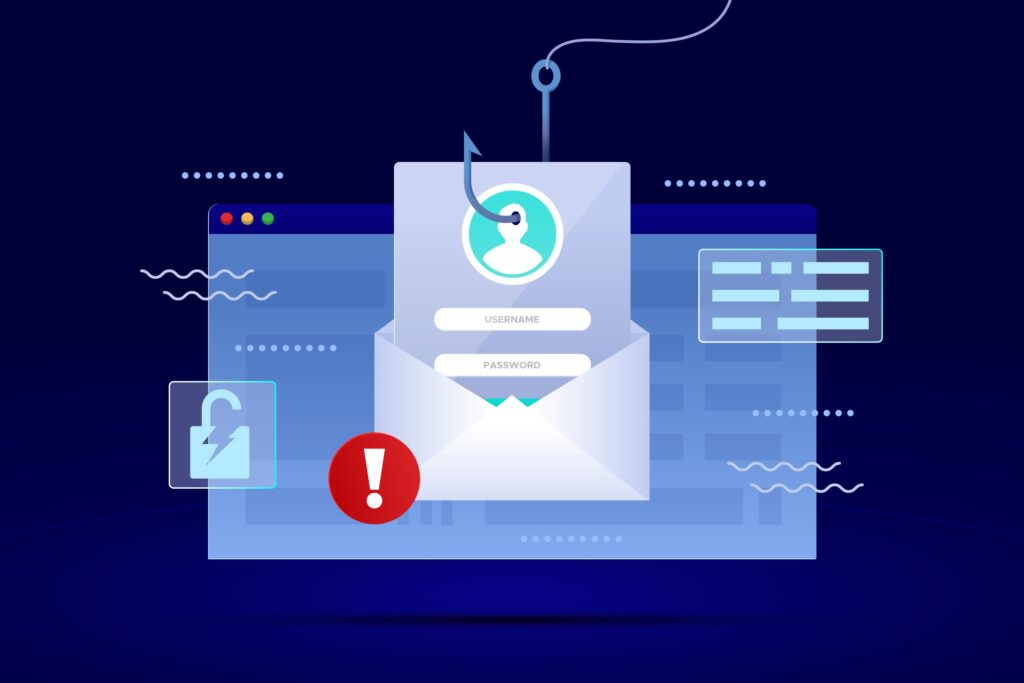Phishing scams have become increasingly prevalent and sophisticated, posing a significant threat to individuals, businesses, and organizations worldwide. These deceptive attacks use social engineering techniques to trick unsuspecting victims into divulging sensitive information, such as login credentials, financial details, or personal data. In this article, we will explore effective strategies to protect yourself from phishing scams and safeguard your online security.

- Be Skeptical of Unsolicited Emails and Messages:
Phishing attacks often start with a deceptive email or message that appears to be from a legitimate source, such as a bank, government agency, or well-known company. To protect yourself:
- Always verify the sender’s email address. Be cautious of minor variations in the domain name, as phishers often use similar addresses to imitate trusted organizations.
- Look for grammar and spelling errors. Phishing emails frequently contain typos and awkward language.
- Avoid clicking on links or downloading attachments in unsolicited emails. Instead, visit the official website of the organization directly by typing the URL into your browser.
- Double-Check URLs and Website Security:
Phishers create fake websites that mimic legitimate ones to steal your information. To ensure you’re on a secure website:
- Examine the website’s URL carefully. Legitimate websites typically use “https://” and display a padlock symbol in the address bar to indicate a secure connection.
- Hover your cursor over links to reveal the actual URL before clicking. Ensure it matches the official website’s domain.
- Avoid entering sensitive information on unencrypted websites (those without “https://”).
- Use Multi-Factor Authentication (MFA):
MFA adds an extra layer of security to your online accounts by requiring you to provide multiple forms of identification. Even if a phisher obtains your password, they won’t be able to access your account without the additional authentication factor.
- Enable MFA wherever possible, especially for email, financial, and social media accounts.
- Utilize authentication methods like SMS codes, authenticator apps, or hardware tokens.
- Educate Yourself and Stay Informed:
Knowledge is a powerful defense against phishing scams. Stay informed about the latest phishing tactics and scams to recognize them more easily:
- Regularly research and read about current phishing trends and threats.
- Share information about phishing scams with friends, family, and colleagues to raise awareness.
- Beware of Urgent or Threatening Language:
Phishers often use urgency and fear to manipulate victims into taking quick action. If you receive a message that seems overly urgent or threatening:
- Pause and think before acting impulsively.
- Contact the alleged sender through official channels to verify the message’s authenticity.
- Use Anti-Phishing Tools and Software:
Many security solutions offer anti-phishing features that can help protect you from malicious links and email attachments:
- Install reputable antivirus and anti-malware software that includes anti-phishing capabilities.
- Enable the built-in email filtering features provided by your email service provider.
- Regularly Update Your Software:
Keep your operating system, web browsers, and software applications up to date. Developers release updates and patches to address security vulnerabilities, reducing the risk of exploitation by phishers.
- Enable automatic updates when possible to ensure you’re always running the latest versions.
- Secure Your Wi-Fi Network:
A compromised Wi-Fi network can provide attackers with access to your devices and data. Protect your home network by:
- Using a strong, unique password for your router.
- Enabling WPA3 or WPA2 encryption for your Wi-Fi network.
- Changing the default administrator credentials for your router.
- Exercise Caution on Social Media:
Phishers often use social media platforms to gather information about potential targets. Be cautious about the information you share:
- Adjust your privacy settings to limit the visibility of your personal information.
- Be selective about accepting friend requests or connections from unknown individuals.
- Regularly Monitor Financial Statements:
Frequently review your bank and credit card statements for unauthorized transactions. Early detection can prevent further financial damage if your information is compromised.
Conclusion
Phishing scams remain a persistent threat in the digital age, but with vigilance, education, and the implementation of security best practices, you can protect yourself from falling victim to these deceptive attacks. Remember that phishers often target individuals who are unaware of their tactics or those who act hastily out of fear or urgency. By staying informed and following these protective measures, you can significantly reduce your vulnerability to phishing scams and maintain your online security.